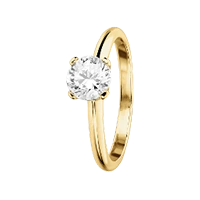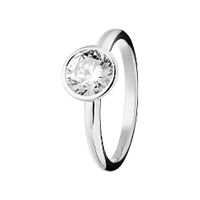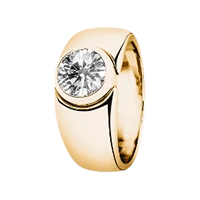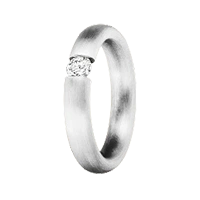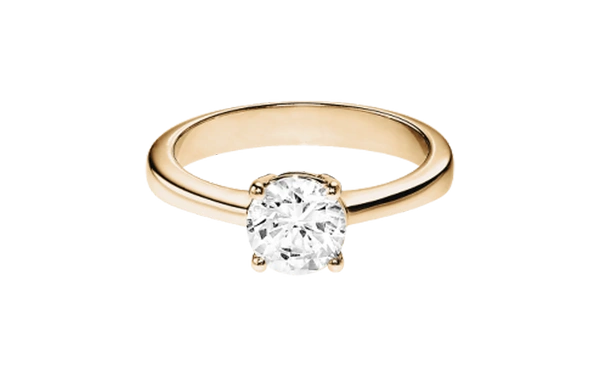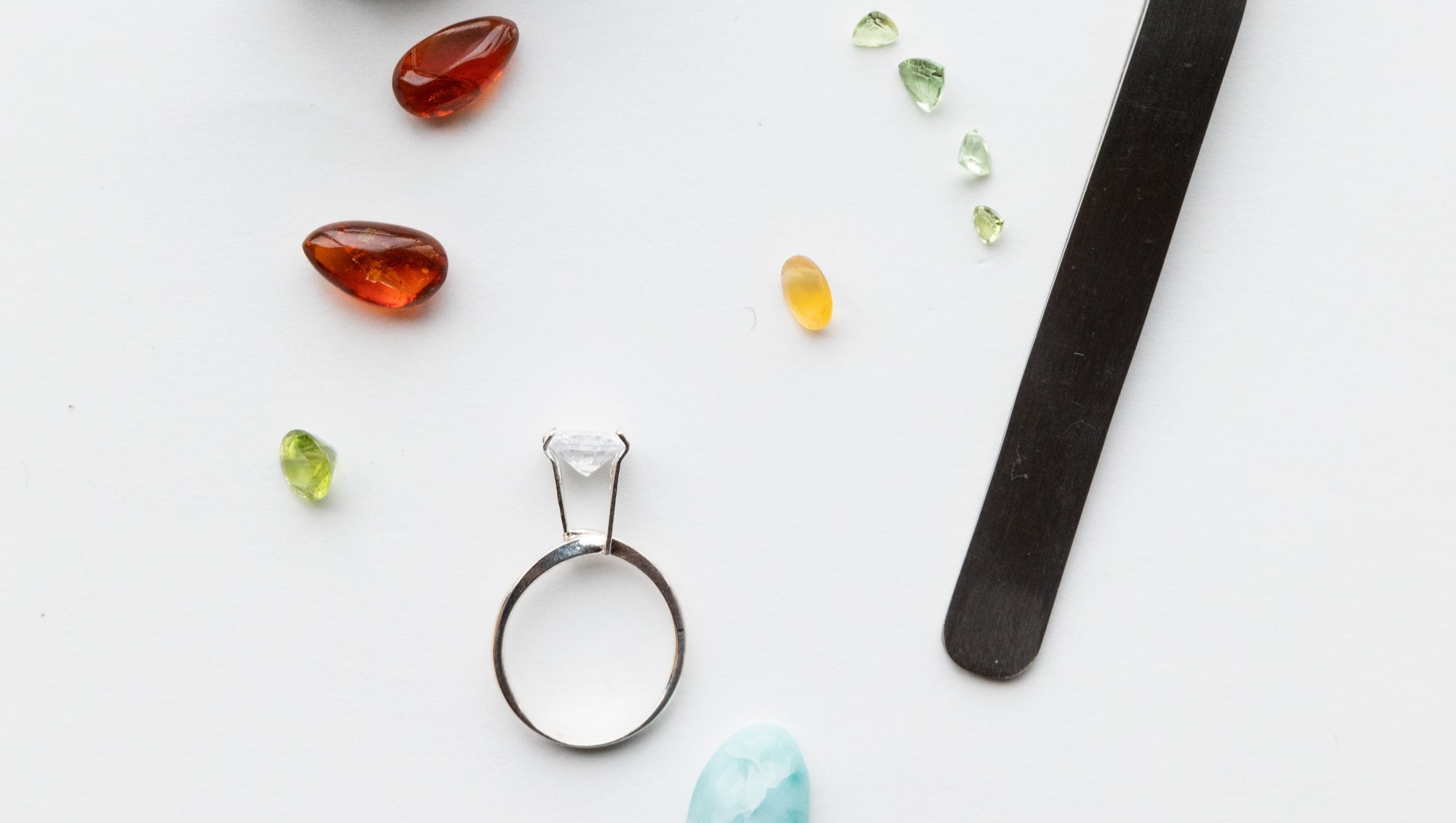
Solitaire rings are probably the most well-known form of diamond ring and are often used as a classic engagement ring.
They got their name from the French term solitaire (loner), as a single diamond sits on the ring band.
The Solitaire Ring – A Novelty from the 19th Century
The first solitaire rings were created in 1886 based on designs by Tiffany & Co. and were made of platinum . The shape of the solitaire rings was an innovation in that the lower part of the diamond was not covered by the setting as was usual before, but the openness on the underside of the gemstone allowed light to penetrate there as well. This special incidence of light increased the brilliance, which made the diamonds on the solitaire rings appear larger.
This innovative setting was given the name claw setting because the diamond is set by wire-shaped pieces of precious metal (claws) that hold it at its girdle and hardly impede the light.
Because of their claw-like appearance, there is also the alternative name claw setting.
After its invention, the prong setting gained in popularity along with solitaire rings and eventually became one of the most commonly used settings in the 19th century.
The first solitaire rings had six claws holding the diamond; however, there are now variations with only three or four claws, for example.
The setting of the solitaire rings has its best effect when the gemstones are made in a brilliant cut , as this is optimized to bring out the maximum fiery sparkle from the stones.
